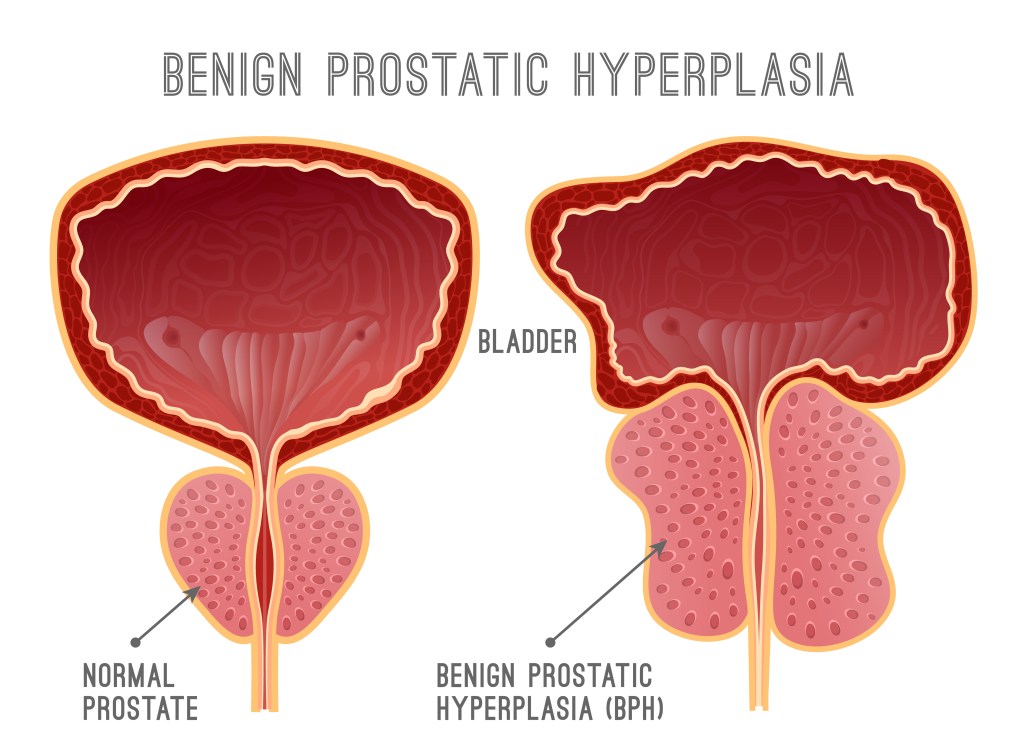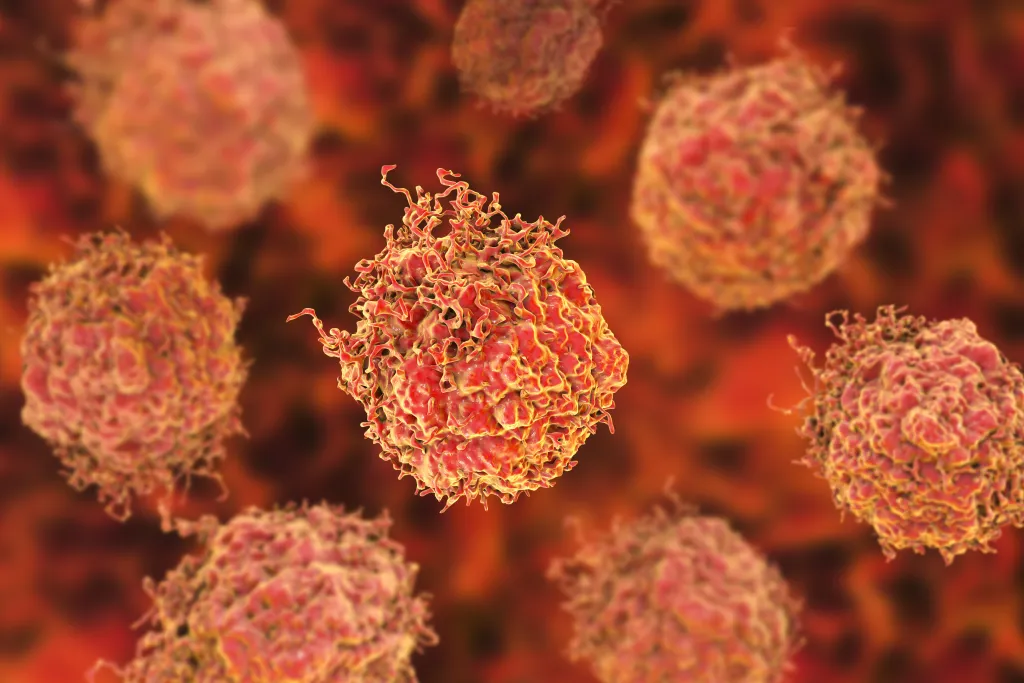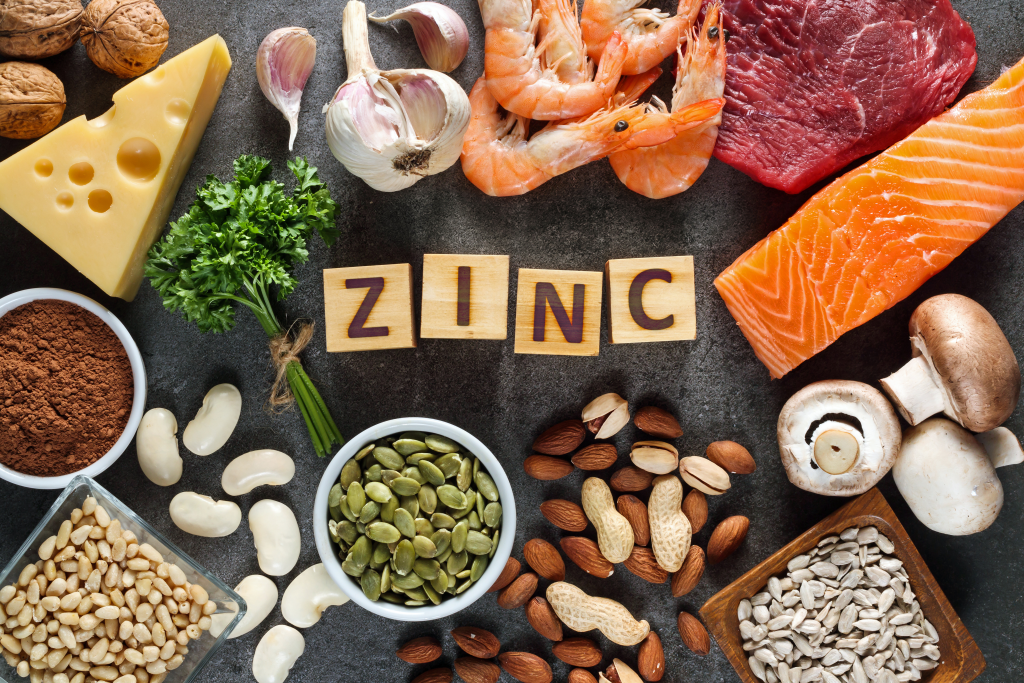At a glance
Can zinc shrink prostate tissue? Zinc is the most concentrated mineral in the prostate gland and plays a vital role in regulating cell growth and hormone balance. Maintaining healthy zinc levels by prioritizing a nutrient-rich diet may help shrink an enlarged prostate, support normal urinary function, and reduce the risk of prostate cancer.
The prostate gland is a vital part of the male reproductive system and crucial for male fertility. Most men don’t think much about this gland until they develop an enlarged prostate and experience issues with urination.
Adequate intake of zinc–a key nutrient for male health–can help reverse an enlarged prostate gland, promote normal prostate function, and may reduce the risk of prostate cancers.
Let’s take a deeper look at the role of zinc in prostate health and how increasing your intake of zinc-rich foods may help shrink an enlarged prostate naturally.
What is the prostate?
The prostate is a small walnut-shaped gland that sits just below the bladder in front of the rectum and wraps around the urethra–the tube that carries urine from the bladder and semen from the testicles.
Its primary function is to produce prostatic fluid that carries semen during ejaculation and contains nourishing compounds that keep sperm cells fertile.
The prostate also helps to regulate the flow of urine and plays an essential role in the production of male sex hormones, including testosterone.
Watch the video below to learn how zinc can help shrink an enlarged prostate naturally.
What causes an enlarged prostate?
The size of the prostate gland can vary depending on factors such as age and body size. However, most normal prostate tissue is about the size of a walnut or a ping-pong ball.
As men age, it’s common that the prostate gland increases in size, a condition known as benign prostatic hyperplasia (BPH).
It’s believed that age-related hormonal changes trigger the proliferation of prostate cells and the development of nodules, which causes prostate enlargement.
A study published in The Lancet found that more than half of all men aged 60 and as much as 80 percent of men aged 90 and older have an enlarged prostate gland.1
Individuals with a family history of BPH, obesity, heart disease, insulin resistance, and diabetes appear to be at an increased risk, which may indicate that prostate health is influenced by a number of metabolic factors.
Common symptoms of an enlarged prostate include:
- Difficulty starting urine flow
- Interrupted urine flow
- Frequent urination at night
- Feeling that the bladder isn’t empty after urination
- Incontinence
Zinc deficiency has recently become a main focus of research investigating the underlying causes of prostate enlargement, and a study published in Frontiers of Oncology found that insufficient zinc levels may have serious repercussions for men.2
The researchers noted, “In prostate cancer tissue, mean zinc levels are decreased by up to 80 percent, and in prostatic tissue derived from benign prostate enlargement, zinc levels are decreased by more than 50 percent.”
It’s important to understand that prostate enlargement doesn’t increase the risk of prostate cancer.
However, the two conditions can exist at the same time. If you experience changes in urination or other signs of prostate enlargement, consult a healthcare professional for proper evaluation.

Why does zinc help shrink an enlarged prostate?
While zinc can be found in almost every cell in the human body, the prostate glands contain the highest concentrations of this essential mineral.
“The prostate contains significantly more zinc than the blood or any other organ. That’s why zinc is the most important trace mineral for maintaining the size of the prostate and promoting sperm fertility,” explains Dr. Berg.
Dietary zinc intake plays a crucial role in maintaining prostate health and regulates several functions of the prostate gland, including the production of prostatic fluid and testosterone.
Zinc also controls the growth of prostate tissue, which may explain why zinc deficiency can trigger unregulated cell proliferation and contribute to prostate enlargement.
In addition, consuming more zinc-rich foods may help stop and even reverse prostate growth through its ability to control key hormones within the prostate. Prostate cells are highly sensitive to hormones, particularly testosterone and dihydrotestosterone (DHT).
DHT is known to stimulate the growth of prostate cells, and elevated DHT levels are found in the majority of prostate tissue samples in men with an enlarged prostate.
It’s believed that zinc inhibits the activity of the enzyme that converts testosterone into DHT, thereby reducing the amount of DHT available to trigger the growth of prostate tissue.
Maintaining adequate zinc levels may help restore normal cell growth and hormone levels, which explains why increasing your intake of zinc-rich foods can be effective at shrinking an enlarged prostate.

Zinc and prostate cancer
Although prostate cancer incidence is declining, it remains the second most common type of cancer in men.
Zinc has been extensively studied in relation to prostate cancer development, and zinc deficiency is linked to an increased risk of the development of carcinogenic prostate cells.
Zinc is a powerful antioxidant that can protect prostate cells from free radicals. These harmful metabolic by-products damage cellular structures and DNA, which can lead to mutations and the formation of cancerous prostate tissue.
It’s also believed that zinc’s anti-inflammatory properties protect prostate health and lower the risk of prostate cancer. Chronic inflammation is a main contributor to irregular cell growth and the development of cancer cells.
Zinc reduces intracellular inflammation, which may help prevent the growth and proliferation of prostate cancer cells.

Signs of zinc deficiency
Zinc deficiency is common, and according to a report published by the National Institute of Health (NIH), “According to an estimate based on analyses of zinc and phytate available in national food supplies and the prevalence of stunting, approximately 17 percent of the world’s population is likely to have zinc deficiency.”3
Here are common signs and symptoms of zinc deficiency:
- Low libido
- Low sperm count
- Poor wound healing
- Frequent infections
- Loss of appetite or taste
- Diarrhea
- Hair loss
- Brittle nails
- Skin rashes or acne
- Delayed growth or sexual development in children
Although zinc is found in a range of foods such as red meat, seafood, seeds, nuts, and dairy, there are some surprising reasons for zinc deficiency despite consuming plenty of zinc-rich foods.
Factors such as low stomach acid and medications, including antacids and diuretics, and phytates in grains significantly reduce or even block the intestinal absorption of dietary zinc.
In addition, alcohol, insulin resistance, a high-carb diet, and cholesterol-lowering drugs have been found to deplete the body’s zinc stores by increasing urinary zinc excretion, which may explain why so many individuals are at risk of zinc deficiency.

How much zinc for an enlarged prostate
The recommended daily zinc intake for adult males is 11 milligrams. However, to shrink an enlarged prostate, around 25 milligrams daily is recommended to help replenish zinc concentrations in prostate tissue.
Oysters contain the highest levels of zinc among all foods in the world, delivering approximately 30 milligrams of zinc per six oysters. Other zinc-rich food sources include red meat, poultry, seafood, nuts, and grass-fed dairy products.

Can too much zinc cause prostate issues?
There is evidence that too much zinc can worsen an enlarged prostate and may increase prostate cancer risk.
Evidence published in Biomedicines found that a daily intake of 100 milligrams of zinc and above appeared to increase the risk of prostate cancer progression.4
Key takeaways
- The prostate contains exceptionally high concentrations of zinc, which helps regulate tissue growth and hormone activity.
- Zinc deficiency is linked to prostate enlargement and an increased risk of prostate cancer.
- Adequate zinc may reduce DHT production, which has been found to help prevent prostate tissue overgrowth.
- Regularly incorporating zinc-rich foods, such as oysters, red meat, and nuts, supports prostate health and promotes overall male well-being.
FAQ
1. Does zinc shrink prostate tissue?
Yes, maintaining adequate zinc levels may support normal prostate size by promoting healthy hormone balance and cell growth.
Zinc regulates the growth of prostate tissue and supports balanced hormone levels, which control the proliferation of prostate cells and may help prevent or reverse an enlarged prostate.
2. How much zinc to support a healthy prostate?
The recommended dietary allowance (RDA) for zinc is 11 milligrams daily for adult men. However, to address a zinc deficiency and help support normal prostate function, you may need to consume up to 25 milligrams of zinc from nutritious whole foods daily.
3. Can too much zinc affect your prostate?
Yes, too much zinc can cause prostate enlargement and may increase your risk of developing prostate cancer.
Regularly consuming 100 milligrams of zinc or more daily for extended periods has been linked to benign prostatic hyperplasia, also known as enlarged prostate, and may contribute to the proliferation of cancerous prostate cells.
4. Is zinc good for the prostate?
Zinc is an essential mineral that regulates many prostate gland functions, including testosterone and prostatic fluid production.
It also governs the growth and proliferation of healthy prostate cells, and a lack of adequate zinc can lead to hormonal imbalances and prostate enlargement, and may increase the risk of prostate cancer.
5. Can zinc cure prostatitis?
Although zinc isn’t considered a cure for prostatitis, consuming plenty of zinc-rich foods may support balanced inflammatory responses in prostate tissue and promote healthy immune functions, which may help improve prostatitis symptoms.
6. How much zinc is too much for prostate health?
Consuming more than 100 milligrams of zinc per day can negatively impact prostate health over time and may increase the risk of prostate enlargement and cancer.








